Our resident author, Stuart Miller-Osborne has written a wonderful article about Mrs. Beeton and all that she achieved in her short life. I enjoyed reading it very much and I am sure you will too.
Rita
ISABELLA BEETON
Before I start, let me confess that I am probably the least qualified person on the planet to write about Isabella Beeton. I am one of those unfortunates who have no ability in the kitchen and if left to their own devices would most probably starve to death in an attic room.
But why write of Isabella (as I shall call her)? She has been at rest with her husband Samuel for nearly one hundred and fifty years at a cemetery in West Norwood but visit any cook shop or book shop and you will find many references to Isabella.
But why has Isabella travelled the years with ease whilst a contemporary such as Eliza Acton (1799-1859) is almost forgotten? I think the main reason was that she was really in the right place at the right time. A number of people think her writings inferior to Acton (Who was a great influence on Isabella). I am not in a position to discuss this but on researching Isabella’s life I can see their point. Whilst being ultimately a very unlucky woman she had many things going for her which I will reveal as I progress.
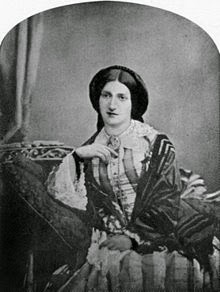 Isabella was born on the 12th of March 1836 at 24 Milk Street in Cheapside, London. This was the first coincidence of her short life as her future husband Samuel Orchart Beeton (1830-1877) was also born in the same street some six years before Isabella. After her birth father died when she was quite young, her mother remarried a Henry Dorling who happened to be clerk of Epsom Racecourse. She attended a school in Heidelberg in Germany before returning to Epsom (where they were now living) after two years.
Isabella was born on the 12th of March 1836 at 24 Milk Street in Cheapside, London. This was the first coincidence of her short life as her future husband Samuel Orchart Beeton (1830-1877) was also born in the same street some six years before Isabella. After her birth father died when she was quite young, her mother remarried a Henry Dorling who happened to be clerk of Epsom Racecourse. She attended a school in Heidelberg in Germany before returning to Epsom (where they were now living) after two years.
Isabella, the eldest child of a rather large extended family (twenty one in all) and although a talented pianist soon became involved in many household duties which held her in good manner for famous book.
Isabella met her future husband through her mother. Samuel was already the publisher of various books and magazines. He had an early success with the publication ofUncle Tom’s Cabin by Harriet Beecher Stowe in 1852 and also published the successful The Englishwoman’s Domestic Magazine as well as The Boys Own Magazine.
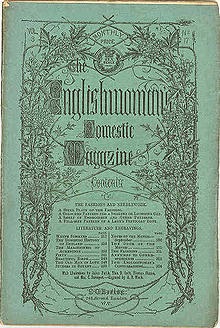 She and Samuel were married in Epsom on the 10th of July 1856 and soon moved to Hatch End in North London. Her first child (Samuel Orchart) was short lived but she had another child in 1859 (also named Samuel Orchart). During this time she wrote articles on household management and cooking in general for her husband’s magazines including a monthly supplement to the The Englishwoman’s Domestic Magazine.
She and Samuel were married in Epsom on the 10th of July 1856 and soon moved to Hatch End in North London. Her first child (Samuel Orchart) was short lived but she had another child in 1859 (also named Samuel Orchart). During this time she wrote articles on household management and cooking in general for her husband’s magazines including a monthly supplement to the The Englishwoman’s Domestic Magazine.
In 1861 these articles were collected together and published in a book format with the huge title of The Book of Household Management, comprising information for the Mistress, Housekeeper Cook, Kitchen-Maid, Butler, Footman, Coachman, Valet, Upper and Under House-Maids, Lady’s-Maid, Maid-of-all-Work, Laundry-Maid, Nurse and Nurse-Maid, Monthly Wet and Sick Nurses, etc. etc.—also Sanitary, Medical, & Legal Memoranda: with a History of the Origin, Properties, and Uses of all Things Connected with Home Life and Comfort or The Book of Household Management for short.
As with certain publications today, it hit a certain vein with the public. It sold in excess of 60,000 copies initially and by 1868 (three years after Isabella’s death) it had sold some two million copies. One would have thought that this success was the beginning of great things for Isabella and Samuel but sadly, it was in a way the beginning of the end.
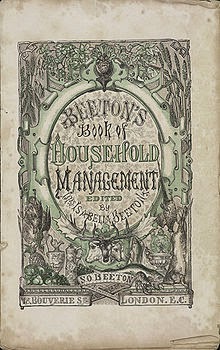 The book that was often known as Mrs Beeton’s Book of Household Management offered advice on a large variety of subjects ranging from the treatment of servants to that of animal welfare. It was an essential addition to any household of the time. It was some eleven hundred pages long with over nine hundred recipes noted.
The book that was often known as Mrs Beeton’s Book of Household Management offered advice on a large variety of subjects ranging from the treatment of servants to that of animal welfare. It was an essential addition to any household of the time. It was some eleven hundred pages long with over nine hundred recipes noted.
As photography was in its infancy the book was lavishly illustrated with engravings and its lasting name Mrs. Beeton’s Cookbook was soon attached to the publication. This name has survived the test of time and the book is still known by that title today.
The major difference (and what made it so popular) was that unlike Eliza Acton and the even earlier Hannah Glasse (1708-1770), the book was written in an easy format, very much like reading Nigella or Delia in the present day.
Isabella was sadly accused of plagiarising other cookery related authors, but she and her husband never noted that the work was originally theirs. It was put together as a guide, very much as a travel writer might reference earlier writers in his work. As with a collector, she was a complier of all the things she found.
But Isabella was more than that and a short piece from her half-sister (which is easily found on the internet), gives you felling of the person. I will quote it in full:
“Different people gave their recipes for the book. That for Baroness pudding (a suet pudding with a plethora of raisins) was given by the Baroness de Tessier, who lived at Epsom. No recipe went into the book without a successful trial, and the home at Pinner was the scene of many experiments and some failures. I remember Isabella coming out of the kitchen one day, ‘This won’t do at all,’ she said, and gave me the cake that had turned out like a biscuit. I thought it very good. It had currants in it.”
Referencing this passage I can see Isabella juggling everything but not dropping one ball and when disasters occurred, she just cleared up and started again. There is a photo of her online and to me she looks like a minor poetess of the day with dreamy distant look in her eyes (obviously the portrait was heavily posed). She might have been on the fringes of The Pre Raphaelite Brotherhood or the author of sad romances but she was not, she dealt in the reality of the Victorian household and the success of her husband’s business.
Sadly in January 1865, Isabella, after giving birth to her fourth child became ill with puerperal fever and died at the early age of twenty eight, a week later. What struck me was the amount she had managed to pack into her short life and how some one hundred and fifty years later she is still a household name mentioned in the same breath as all the modern cooks and chefs.
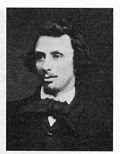 After the tragic loss of Isabella, Samuel’s life took a turn for the worse, You would have thought that the loss of his beloved wife would have been enough for the poor man to behold but in 1866 due to the collapse of a discount house he was attached to, Samuel found himself facing bankruptcy. To avoid this, he sold the copyrights of his publications for just under £20,000. His later years were marred by the onset of tuberculosis and he died on the 6th of June 1877 at the young age (by today’s standards), of forty seven. As I have previously noted, both are buried together in the West Norwood Cemetery. I believe, with their firstborn.
After the tragic loss of Isabella, Samuel’s life took a turn for the worse, You would have thought that the loss of his beloved wife would have been enough for the poor man to behold but in 1866 due to the collapse of a discount house he was attached to, Samuel found himself facing bankruptcy. To avoid this, he sold the copyrights of his publications for just under £20,000. His later years were marred by the onset of tuberculosis and he died on the 6th of June 1877 at the young age (by today’s standards), of forty seven. As I have previously noted, both are buried together in the West Norwood Cemetery. I believe, with their firstborn.
If you are off on the Beeton trail today there is, as far as I can see, very little to see. I am led to understand that their first home in Hatch End was destroyed during an air raid in 1940 although West Norwood Cemetery is still there with its impressive gothic inner gates designed by the architect William Tite who also designed a number of railway stations.
I visited the cemetery in the 1980s to see his work but at the time did not know that Isabella and Samuel were buried there. Should you want to pay your respects to the couple, then I would contact the cemetery directly for information as I will when I finally get around to visiting them.
I do have a scruffy copy of Mrs Beeton’s All About
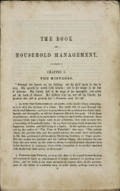 Cookery which I picked up in Newbury for a song quite recently. It is an Edwardian copy which has seen better days. It has the food stains of years as well as a newspaper cutting noting A Yorkshire Woman’s Recipe from a certain Florence Ingillson and the recipes in the book range from Apple Ambers to White Rabbit Soup. As I exist in the black hole between McDonald’s and J D Wetherspoon’s, this is totally lost on me although both seem quite jolly.
Cookery which I picked up in Newbury for a song quite recently. It is an Edwardian copy which has seen better days. It has the food stains of years as well as a newspaper cutting noting A Yorkshire Woman’s Recipe from a certain Florence Ingillson and the recipes in the book range from Apple Ambers to White Rabbit Soup. As I exist in the black hole between McDonald’s and J D Wetherspoon’s, this is totally lost on me although both seem quite jolly.
Although widely published an original copy of Isabella’s 1861 publication can be quite expensive. I have never seen one but often come across later Victorian and Edwardian editions which vary quite widely in price. I have seen poor copies as cheap as £5.00 but normally they can be a lot more expensive than that. My tip for what it is worth, is to bide your time, if you are patient then you will come across one (as I did) for the price of a weekend newspaper.
I have noticed in the last five or so years the upsurge in interest in “All things cooking” each town has one or more cook shops with lots of fascinating objects (most of which are a complete mystery to me). Cooking programmes proliferate on television and the presenters have become household names. My earliest memories were of the fearsome Fanny Cradock and her bullied husband Johnnie. Maybe that is what scared me away from the kitchen. I do not know but I am told I am the poorer for it.
This said I do appreciate what I call the music of cooking which is my term for the artefacts of cooking. I quite often wander through antique shops and the Arcade and look at these instruments. Sometimes their use is obvious but on other occasions one does not have a clue until a helpful soul points that you are holding a grapefruit corer or the like. The collection of these beautiful tools need not be expensive and you can quite often pick up these instruments very cheaply. My wife and I often pick up these mysterious and not so mysterious items (some of which you can still use). It is a hobby of kinds and great fun and if you are keen on the kitchen and cooking then I would recommend it.
Modern kitchen equipment (if it is not twee) is very functional (although I sometimes think the manufacturers are more interested in the branding and colour than the actual instrument), but lacks the feel of the older items. This is not easy to explain but I think you will gather my actual drift. To own an inter war mincer as opposed to a modern one or a Victorian saucepan is different. It has the function of history behind it to labour a point.
 I wonder what happened to the many items that Isabella used. Do some still exist and are some still in use somewhere (I am not aware of any being in museums)? I think it would be quite nice to hold an instrument she actually used but this is a fancy. I will leave the final word to Isabella through her memorial. Part of the inscription on her grave is quite poignant. I will not quote it in full as it is unreadable in parts but the flavour is there.
I wonder what happened to the many items that Isabella used. Do some still exist and are some still in use somewhere (I am not aware of any being in museums)? I think it would be quite nice to hold an instrument she actually used but this is a fancy. I will leave the final word to Isabella through her memorial. Part of the inscription on her grave is quite poignant. I will not quote it in full as it is unreadable in parts but the flavour is there.
And his wife and fellow worker in many of his literary enterprises Isabella Mary Mayson
It was a joint enterprise that worked and even all these years later in a rapidly changing world, is the byword for Victorian attention to detail and thoroughness in preparation. We may have Nigella and Delia and Jamie and Gordon but nothing in my view beats Isabella and her famous book.
Stuart Miller-Osborne
For all the news, go to our Newsletter at www.hungerfordarcade.co.uk
